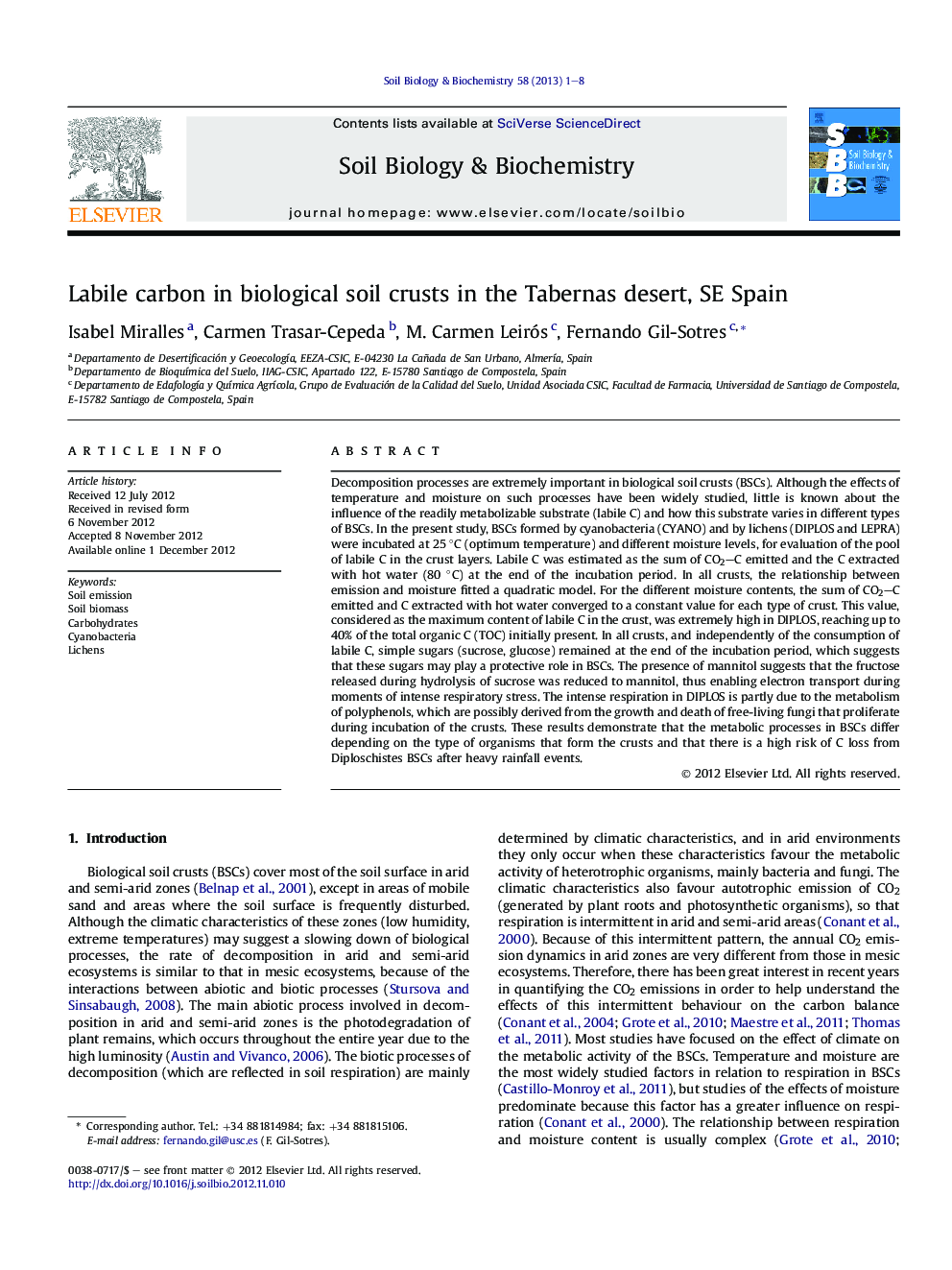| کد مقاله | کد نشریه | سال انتشار | مقاله انگلیسی | نسخه تمام متن |
|---|---|---|---|---|
| 2024863 | 1542626 | 2013 | 8 صفحه PDF | دانلود رایگان |

Decomposition processes are extremely important in biological soil crusts (BSCs). Although the effects of temperature and moisture on such processes have been widely studied, little is known about the influence of the readily metabolizable substrate (labile C) and how this substrate varies in different types of BSCs. In the present study, BSCs formed by cyanobacteria (CYANO) and by lichens (DIPLOS and LEPRA) were incubated at 25 °C (optimum temperature) and different moisture levels, for evaluation of the pool of labile C in the crust layers. Labile C was estimated as the sum of CO2–C emitted and the C extracted with hot water (80 °C) at the end of the incubation period. In all crusts, the relationship between emission and moisture fitted a quadratic model. For the different moisture contents, the sum of CO2–C emitted and C extracted with hot water converged to a constant value for each type of crust. This value, considered as the maximum content of labile C in the crust, was extremely high in DIPLOS, reaching up to 40% of the total organic C (TOC) initially present. In all crusts, and independently of the consumption of labile C, simple sugars (sucrose, glucose) remained at the end of the incubation period, which suggests that these sugars may play a protective role in BSCs. The presence of mannitol suggests that the fructose released during hydrolysis of sucrose was reduced to mannitol, thus enabling electron transport during moments of intense respiratory stress. The intense respiration in DIPLOS is partly due to the metabolism of polyphenols, which are possibly derived from the growth and death of free-living fungi that proliferate during incubation of the crusts. These results demonstrate that the metabolic processes in BSCs differ depending on the type of organisms that form the crusts and that there is a high risk of C loss from Diploschistes BSCs after heavy rainfall events.
► Maximum respiration occurs at higher moisture in cyanobacteria than in lichen BSCs.
► Labile C in BSCs can be estimated as C extracted in hot water + mineralized C.
► In BSCs labile C represents between 17 and 39% of the TOC.
► Carbohydrates extracted with hot water contained sucrose and glucose but no fructose.
► Most of the mineralized C by Diploschistes BSCs is derived from polyphenol fraction.
Journal: Soil Biology and Biochemistry - Volume 58, March 2013, Pages 1–8